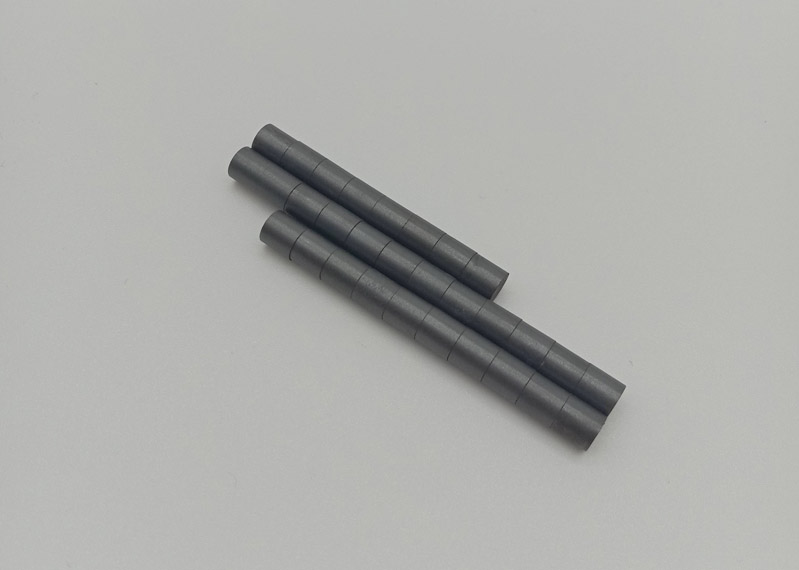In the field of magnetic materials, demagnetization refers to the phenomenon in which the magnetic properties of a magnetic material are weakened or even disappear under the influence of external factors (such as temperature or applied magnetic field). The phenomenon of demagnetization is divided into two types: reversible demagnetization and irreversible demagnetization, which will be introduced to you below.
The accompanying picture shows the cylindrical ferrite magnets, which is less prone to demagnetization compared to sintered neodymium magnets.

Reversible demagnetization means that when the magnet has a reverse magnetic field outside, or is in a high-temperature operating environment, the magnet's magnetic force will have a certain degree of attenuation, when the withdrawal of the external reverse magnetic field or return to the normal working environment from the high-temperature working environment, the magnet's magnetic force will be restored to the saturation state of the magnetizing state, the magnetic force of this process from the attenuation of the restoration of the reversible demagnetization is the process of reversible demagnetization;
Irreversible demagnetization means that when the external reverse magnetic field is withdrawn or when the high temperature working environment is returned to the normal working environment, the magnet's magnetic force is not restored to the saturation state, and the decay of this magnetic force is the so-called irreversible demagnetization;
Anti demagnetization ability is mainly based on the magnet endowment coercivity to measure; endowment coercivity is higher, the magnet demagnetization ability is stronger, you can look at our neodymium iron boron performance parameter chart, you can see, the same grade of N35 and N35SH, their remanent magnetism, coercive force, the maximum energy product parameters are the same, only the endowment coercivity is different, and the N35 maximum operating temperature of 80 degrees, N35SH maximum operating temperature can be used for the same purpose, and the N35SH maximum working temperature is 80 degrees. N35SH maximum working temperature can reach 150 degrees, from which we can learn, the endowment coercivity is a measure of the magnet demagnetization ability of an index, can also be understood as, the higher the endowment coercivity, the higher the magnet's operating temperature can be;
We also need to confirm the magnetization direction of the magnet in advance when purchasing magnets, or when the magnet magnetization is completed, found that the magnetization direction is wrong, then it is a problem; magnet to be re-magnetized after demagnetization, then; only so that it is in a temperature greater than the maximum working temperature of the environment, so that the magnet will be by the high temperature and loss of magnetism, but the chemical properties of such magnets are not stable, re-magnetization, magnetic force is not up to the demagnetization of the previous magnetization, the magnetism is not as strong as the magnetization of the previous magnetization of the previous magnetization of the previous magnetization of the previous magnetization of the magnetization. Magnetism can not reach the size of the magnetism before demagnetization.
More magnet demagnetization introduction;
How to Magnetize and Demagnetize Permanent Magnets
Do neodymium magnets demagnetise at transient high temperatures?
Difference between demagnetized magnet and non-demagnetized magnet
 China Neodymium And Ferrite Magnets Manufacturer & Supplier
China Neodymium And Ferrite Magnets Manufacturer & Supplier 


